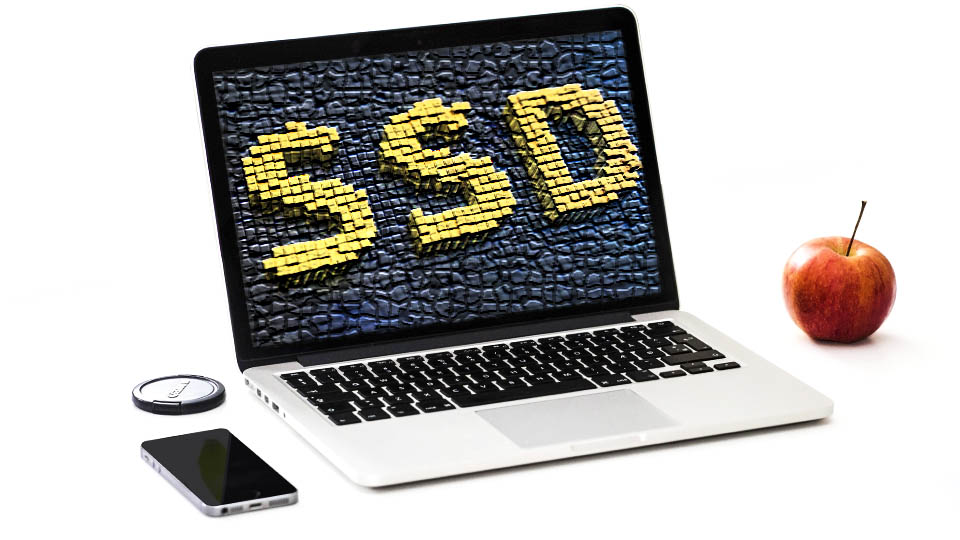
Introduction
The SSD (solid-state drive) gains wild popularity after it made its debut. Compared with HDD, it enjoys faster data speed, a longer lifespan, and lower power consumption. Consequently, it’s becoming a good choice for external storage. However, the SSD has flaws as well. Some Mac users report that the external SSD is not recognized when plugged in and they find it unable to access the drive. How to fix an unrecognized external SSD without hurting the data stored on it? This post will solve your dilemma for good.
How to fix external SSD not recognizing?
There are quite a few things to check if your external SSD not recognized on Mac, though some of them may not work out well. You may follow the methods below to check them one by one.
Method 1
Check all the connections, including the cable, interface, and adapter.
- All external SSD drives adopt the SATA interface, but it could be SATA I, II, or III. You’d better check whether the adapter you use is compatible with the SSD or not.
- The cable might be worn out after everyday use. Try out another cable to find out whether it’s the cable’s fault.
- In case you are using an adapter, make sure the adapter is plugged tightly into your Mac devices.
- Simply connect your external SSD to another Mac or PC and see if it’s detected by the computer. This indicates which one is the culprit, the solid-state drive, or the computer.
Method 2
Give your Mac a restart.
Sometimes the SSD not recognizing on Mac is caused by the macOS, to fix that, a simple restart would do you good. The memory on Mac is refreshed and everything is ready to go. And remember to reconnect the disk after rebooting as well.
Method 3
Repair the SSD in Disk Utility with the help of First Aid.
First, you have to check if the SSD is listed in Disk Utility, the disk management tool on macOS. You can navigate to Disk Utility by Launchpad > Other > Disk Utility. The Disk Utility windows displays all detected drives on the left. See if you can find the external SSD. If, unfortunately, there’s no sign of it, the disk might be physically damaged and there’s really not so much you can do about it except find a local disk repair store. If it’s listed in the Disk Utility window but not showing up on your Mac, First Aid can help to troubleshoot the minor errors in the SSD.
- Click on the SSD which is grayed out from the left sidebar.
- Press the First Aid button on the top of the window to start detecting and repairing.
- Hit Done when the process completes.
Once the disk is fixed by First Aid, try opening it again and see if it’s accessible.
Method 4
Run command prompt in Terminal to repair the SSD.
It’s likely that First Aid doesn’t solve your dilemma, in this case, using Terminal to run command lines might do you good. Here’s how.
- Launch Terminal from the Launchpad on Dock > Other > Terminal.
- Input the following prompt and hit Enter. You should take notes of the identifier of the external SSD.
diskutil list - Input the following commands and hit Enter. Note the identifier of the external SSD.
diskutil verifyVolume SSD_ID - If errors appear, type in the following commands and hit Enter to start recovery.
diskutil repairVolume SSD_ID
Besides the above solutions, one last thing you can try is reformatting the drive. However, given the risk of reformatting the SSD, this method is not suggested and therefore won’t be mentioned here.

How to deal with the data in the external SSD?
As long as the external SSD is misbehaving, your data within is in unknown danger. Therefore, how to take care of the data in an unrecognized external SSD is one issue you should know. Here we suggest using iBoysoft Data Recovery for Mac to recover the data first before dealing with the problematic disk. This data recovery software is trusted by users around the globe and is compatible with all M1 and Intel-based Macs.
 LG G6
LG G6  Samsung Galaxy Z Fold 3
Samsung Galaxy Z Fold 3  Samsung Galaxy A21s
Samsung Galaxy A21s  Motorola Moto G54
Motorola Moto G54  HTC Sensation
HTC Sensation 

